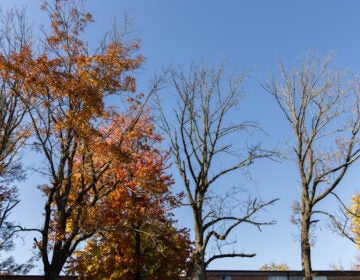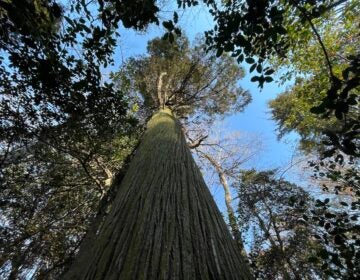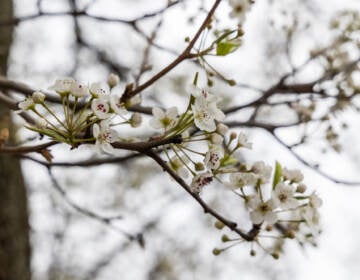On the tree farm, a Christmas favorite thrives. In the wild, it struggles
The balsam wooly adelgid has devastated Appalachia’s native Fraser firs. On a North Carolina farm, their domesticated cousins grow with TLC.
Listen 06:41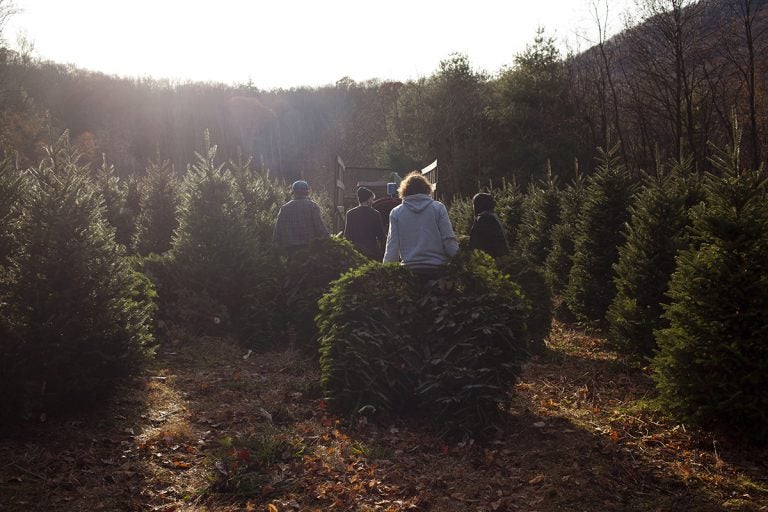
Workers harvest Fraser fir Christmas trees on Joey Clawson’s farm, outside Boone, NC. (Irina Zhorov/For WHYY)
On the first day of cutting at Joey Clawson’s Christmas tree farm, in the mountains outside Boone, North Carolina, four workers picked their way through Fraser firs planted in neat rows. It took just a few seconds to chainsaw each tree, which Clawson has spent years pampering.
He has about 95,000 trees in the ground, of various sizes and ages. For nearly a decade before harvest, workers fertilize individual trees by hand, shape them one by one with giant machetes, and, if needed, help them fight pests.
“It’s four to five months that I’m out here weekly, with magnifying glass, checking bunches of trees in every field,” Clawson said. “That’s a lot of hours I’m spending taking care of my trees.”
Pests have become a problem on tree farms like Clawson’s, which tend to be lower in altitude than the trees’ native range. If Clawson spots an outbreak — of various aphids, mites, hemlock scale, or the balsam woolly adelgid — he sprays with insecticide.
All in the name of a perfect Christmas tree.
“Because it’s all about creating family memories,” Clawson said.
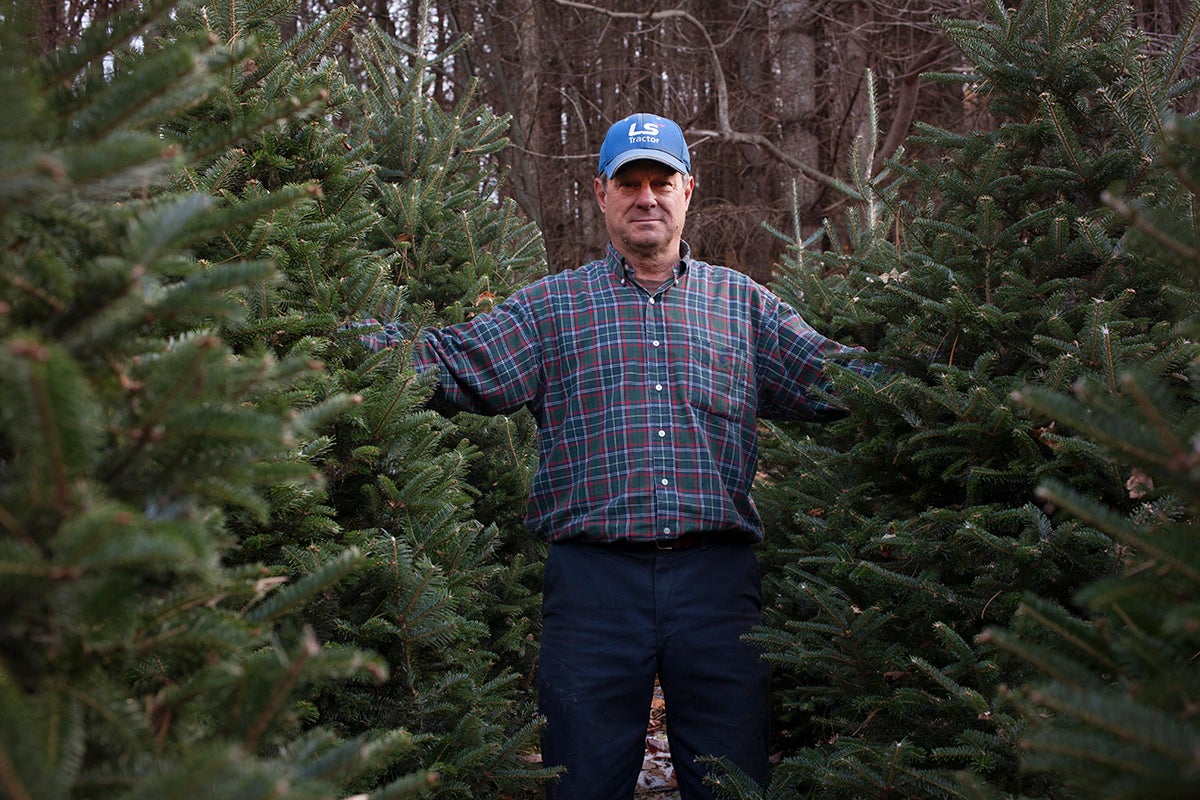
North Carolina grows more Christmas trees than any other state except Oregon. It’s an important, nearly $90 million-dollar industry for the state, which produces more than 4 million trees per year. Most of the trees are Fraser firs — their needles don’t shed as much as other evergreens, and they have limbs strong enough for ornaments.
But these prized Fraser firs, which millions of families put up in their homes for Christmas, have become more rare in the wild. That’s due to the balsam woolly adelgid, a bug that can be controlled on a farm, but not in a forest.
Biologist Howard Neufeld, who teaches at Appalachian State University, has witnessed its destruction firsthand.
When he graduated high school in the 1970s, he and two friends took a trip to the Smoky Mountains and hiked, Neufeld said.
“You walked through this dark, dank forest with Fraser firs and a couple of spruce sticking up above you, with moss on the ground and lichens hanging from branches,” he said. “Ten years later, almost all those trees had died from the adelgid.”
The balsam woolly adelgid injects a toxin into trees. That triggers abnormal growth and makes the trees unable to take up water, which eventually kills them.
Howard said it arrived in the region after extensive logging, at the turn of the 20th century. In a push to reinvent the area around tourism, wealthy landowners and the government decided to replant the highest peak in the Appalachians, Mount Mitchell. They imported trees from Europe, including the silver fir, which carried the adelgid on it.
The insect is tiny, about the size of a grain of sugar, so it wasn’t immediately spotted. Slowly, it began to attack native fir trees. By the 1960s, people were noticing dead trees in the forests. Die-offs spread rapidly in the ’70s and ’80s.
“It’s had a devastating effect here,” Neufeld said.
In some native fir stands, the adelgid has killed more than 90% of the trees. But on Roan Mountain, a ridge in Tennessee about 6,000 feet high, many firs still stand.
Scott Cory, a PhD student studying Fraser firs, walked up a road littered with coyote poop, then climbed a bank into the forest. It was a classic spruce-fir forest, just like Neufeld hiked in his youth. Everything was mossy, and the dense stand of trees was dark enough to mistake for deep dusk.
This was Appalachia, but it looked like the Pacific Northwest and felt like elves were watching from emerald mossy perches. The smell of Christmas was everywhere.
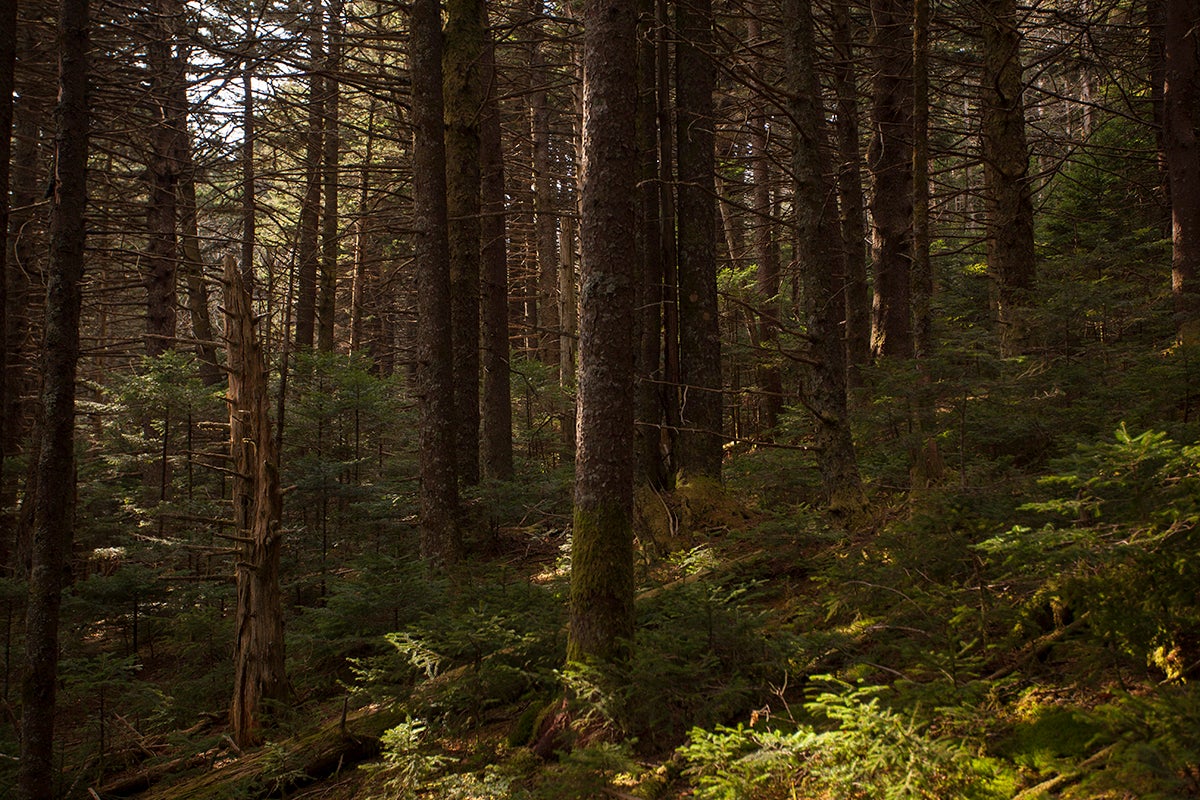
Adelgid aside, this stand of firs is pretty rare, Cory said. At the end of the last glaciation, about 10,000 to 12,000 years ago, the area was a lot colder and the firs lived all up and down the mountain. As the area warmed, the trees had to move farther and farther to the top of the mountain. Today, the Fraser firs live on just seven mountain peaks in the southern Appalachians, and Roan Mountain is one of them.
Cory ran his fingers through a fir’s soft needles — one of the characteristics that makes it a desirable Christmas tree — and said that, genetically, the trees that grow on Roan Mountain are the same as the ones on farms.
“But as far as what they do, you know, for their ecosystem, totally different,” he said.
On the mountain, the Fraser firs are the basis of a whole ecosystem. They keep the air and water clean, store carbon from the atmosphere, and provide habitat for many animals, such as cute little owls and flying squirrels. Some flora and fauna, like a tiny, endangered tarantula called a spruce-fir moss spider, live only here.
In other words, these native stands are wild, like a lion prowling a savanna. The farm trees are more like a lion in the zoo.
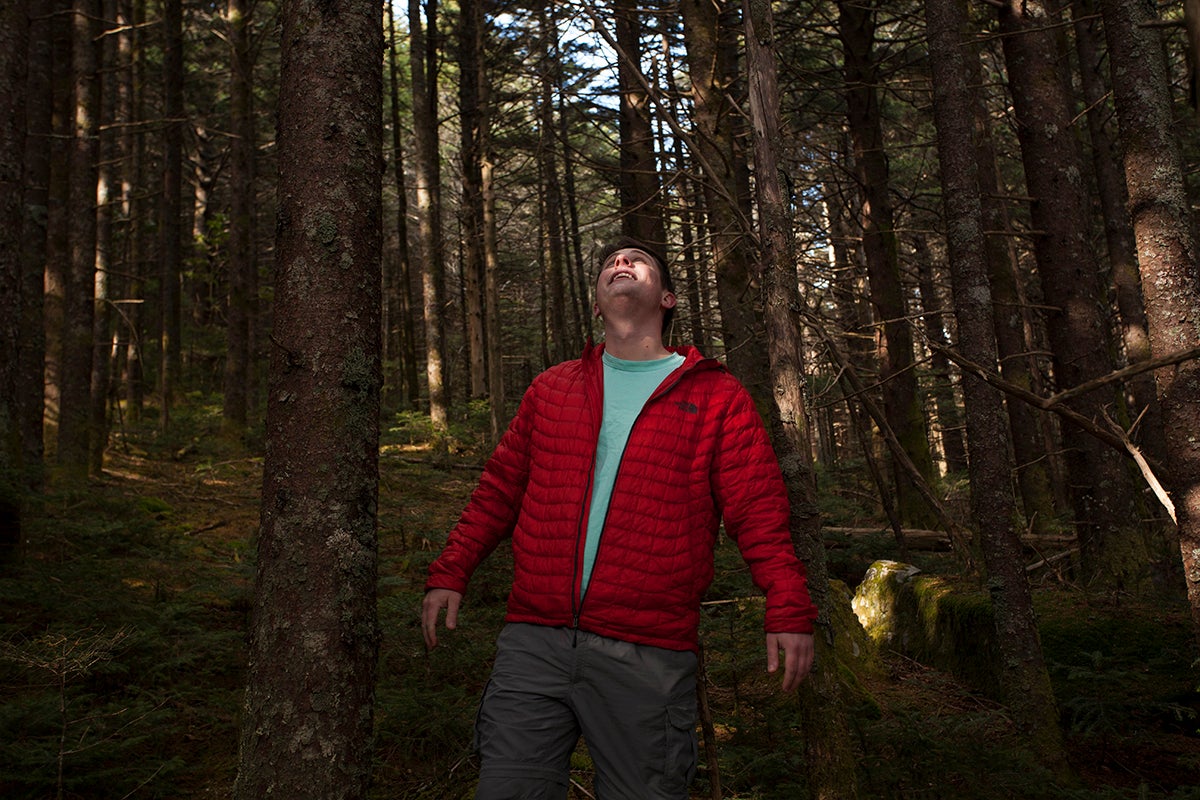
After leaving the forest, Cory walked farther up the road until he spotted a patch of “ghost forest.” A tract of firs killed by the adelgid, the stems white and barkless, glowed in the otherwise dim wood.
On the forest floor, new firs have sprouted. The adelgid affects only older trees, with cracked bark it can penetrate. These young saplings are protected by smooth bark, so they’re safe, for now. The forest is recovering. It’s unclear whether these new firs will in time fall victim to the adelgid.
Cory said he doesn’t think the adelgid will be the thing that wipes out these mountaintop Appalachian forests. But he was clear that this ecosystem — one of the most endangered in the U.S. — is worth protecting.
On his Christmas tree farm, Joey Clawson had pondered this question: Does seeing a native stand of firs in the wild make him feel different than being on the farm? He thought just briefly before affirming.
It makes him think of how the trees have evolved and adapted to these mountains he loves, Clawson said. In the past, he remembered, the National Park Service allowed farmers to pull seedlings from native stands, and he always brought wild pine cones home to plant on his farm.
WHYY is your source for fact-based, in-depth journalism and information. As a nonprofit organization, we rely on financial support from readers like you. Please give today.




